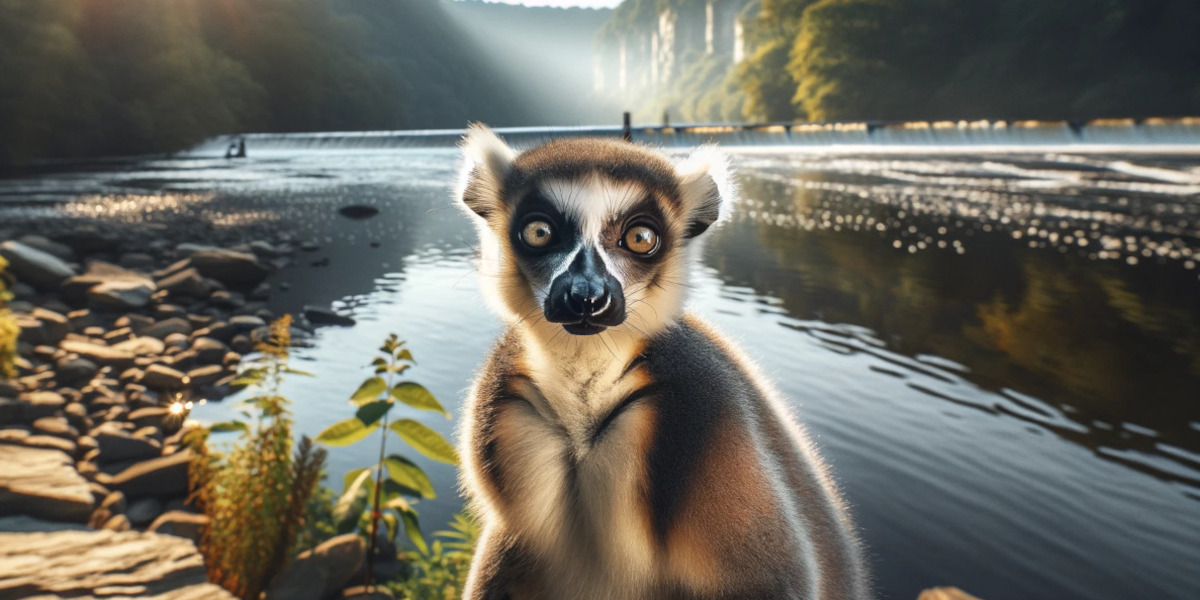
Introduction
Lemurs, with their large, expressive eyes and playful demeanor, have long captured the imagination of people around the world. These primates are renowned for their unique characteristics, such as their varied social structures and their remarkable ability to vocalize and use scent for communication.
Native to the island of Madagascar, located off the southeastern coast of Africa, lemurs inhabit a range of environments from rainforests to dry scrubland. Their adaptation to these diverse ecosystems is proof of their evolutionary success.
When it comes to the question, “Do lemurs live in Australia?” the quick answer is no. Lemurs are not native to Australia. They are indigenous to Madagascar and some small neighboring islands.
While they can be found in zoos and wildlife sanctuaries across Australia, they do not naturally live in the wild in Australia. This distinction is crucial for understanding the natural biodiversity of regions like Australia and Madagascar, each with its own unique set of wildlife and ecological challenges.
Australia’s Wildlife and Ecosystem

Overview of Australia’s Natural Ecosystem
Australia is celebrated for its diverse and unique ecosystems, ranging from the deserts of the Outback to the lush rainforests of Queensland, and the vibrant marine life of the Great Barrier Reef. This continent is home to a wide range of native species, many of which are found nowhere else in the world.
Iconic animals like kangaroos, koalas, and the various species of marsupials and monotremes (like the platypus and echidna) highlight the variety of Australian wildlife. The country’s isolation has played a key role in shaping its ecosystems, leading to the evolution of species that have adapted to a wide range of environmental conditions, from tropical to temperate.
The diverse habitats in Australia include coastal areas, tropical rainforests, mountain ranges, and vast desert landscapes, each hosting a unique array of flora and fauna. The Great Barrier Reef, the world’s largest coral reef system, supports a wide variety of marine life. Australia’s commitment to conservation has led to the protection of various habitats through a network of national parks and reserves.
Presence of Non-native Species in Australia
Australia has a history of non-native species being introduced to its ecosystem, with varying impacts. Some of these species were brought intentionally by European settlers for agriculture, hunting, or as pets, while others arrived accidentally, often as stowaways on ships.
One of the most notorious examples is the introduction of the European rabbit in the 19th century for hunting purposes. These rabbits quickly became an invasive species, causing widespread ecological damage due to their breeding and appetite for vegetation.
Another example is the cane toad, introduced in the 1930s to control pests in sugar cane fields. The cane toad has since become a problematic invasive species due to its toxicity, which poses a threat to native predators.
Feral cats and foxes, also introduced by settlers, have had an effect on Australia’s native wildlife, particularly on small mammals and ground-nesting birds. These predators have contributed to the decline and extinction of several native species.
The presence of these non-native species in Australia illustrates the complex and often unintended consequences of introducing foreign species into an ecosystem. These instances have led to increased awareness and stricter controls on the importation of animals and plants into Australia, as well as efforts to manage the impacts of invasive species on the native ecosystem.
Are There Lemurs in Australia?

Lemurs in the Wild vs In Captivity in Australia
The presence of lemurs in Australia is an interesting topic that requires a clear distinction between wild and captive environments. In the wild, lemurs are not found in Australia as they are endemic to Madagascar and a few surrounding islands.
This means that the unique ecosystems of Madagascar are the only natural habitats where lemurs have evolved and exist in the wild. The specific environmental conditions, flora, and fauna of Madagascar are integral to their survival and cannot be naturally replicated in Australia.
However, in captivity, lemurs can be found in various settings across Australia. Zoos, wildlife parks, and sanctuaries in Australia often house lemurs as part of their exotic animal collections.
These institutions provide environments that copy the natural habitats of lemurs to some extent, with efforts made to cater to their dietary, social, and physical needs. These captive settings play a role in educational and conservation efforts, raising awareness about lemurs and the threats they face in their native Madagascar.
Conservation and Legal Aspects of Lemurs Living in Australia
Australia has strict legal frameworks in place when it comes to the importation and keeping of exotic animals like lemurs. The import of non-native species is closely regulated under Australian biosecurity laws to prevent the introduction of invasive species that could disrupt local ecosystems.
Conservation concerns play a significant role in the legal governance of exotic animals in Australia. Authorities aim to balance the educational and research benefits of having exotic species like lemurs in Australian institutions with the ethical considerations of their well-being and the potential environmental impacts.
Australian conservation efforts often extend to international collaborations, particularly in situations where the species are endangered or threatened in their native habitats.
The presence of lemurs in Australian zoos and sanctuaries is also tied to global conservation efforts. These institutions often participate in international breeding programs and conservation initiatives aimed at preserving these unique primates.
Through research, breeding programs, and public education, Australia contributes to the broader goal of lemur conservation, despite the species not being native to the Australian wild.
Conclusion
In conclusion, while lemurs are not native to Australia and do not exist in the wild there, they can be found in various zoos and wildlife sanctuaries across the country. These settings provide an opportunity for Australians and international visitors to learn about and appreciate these unique primates.
The presence of lemurs in Australian institutions plays a crucial role in global conservation efforts, providing valuable insights into their behavior, biology, and the challenges they face in their natural habitat.
The distinction between lemurs in the wild and in captivity is important to understand. It highlights Australia’s commitment to protecting its own unique biodiversity while participating in the conservation of species from other parts of the world.
The strict legal framework governing the import and keeping of exotic animals in Australia reflects a balanced approach to wildlife management, ensuring that the welfare of animals is prioritized and that the ecosystems are protected from potential invasive species.
The question “Do lemurs live in Australia?” opens up a broader discussion about conservation and wildlife management. It highlights the importance of international cooperation in preserving species like the lemurs, and the role that countries like Australia play in supporting these efforts, even when the species are not indigenous to their shores.




